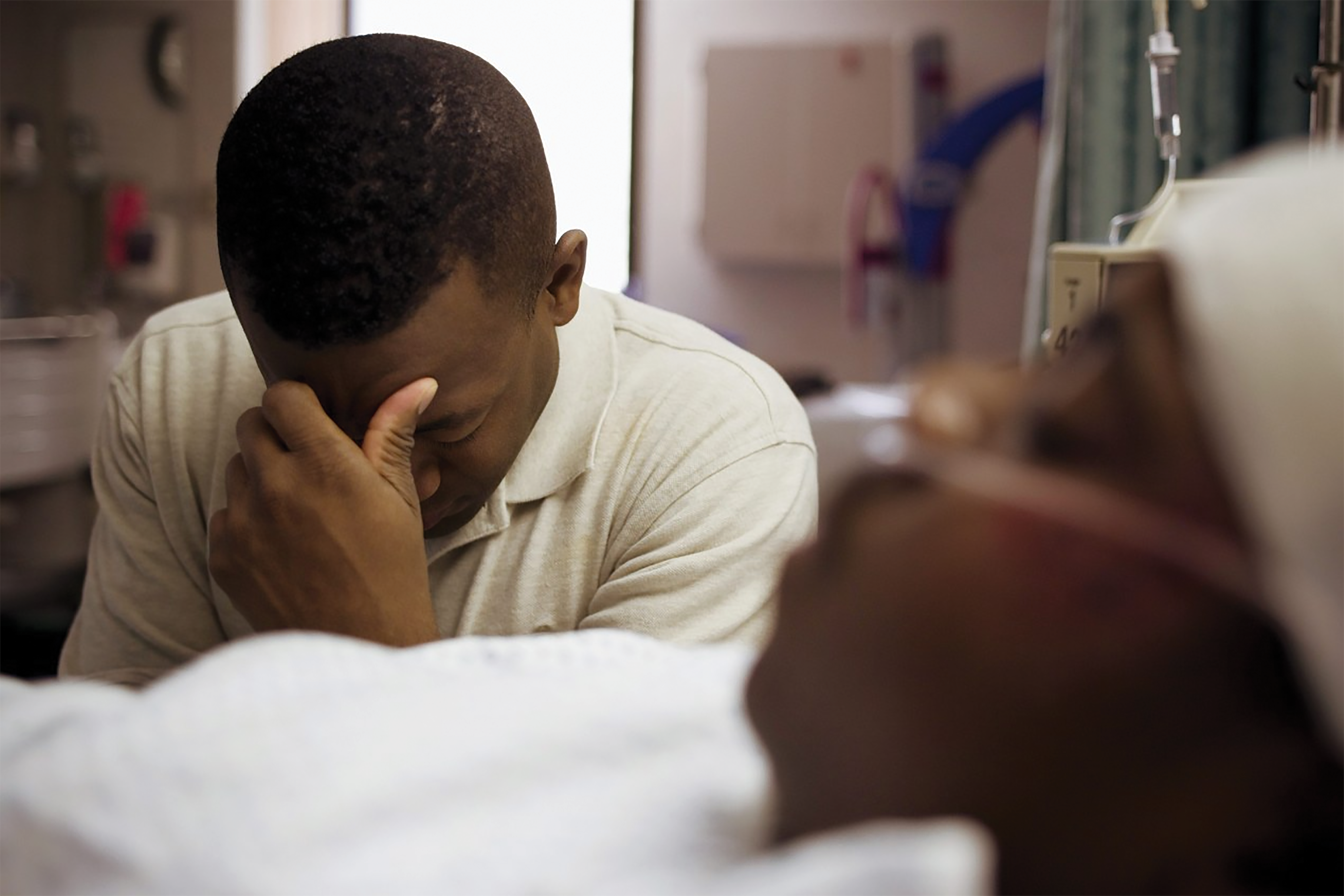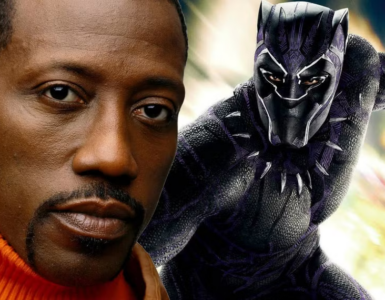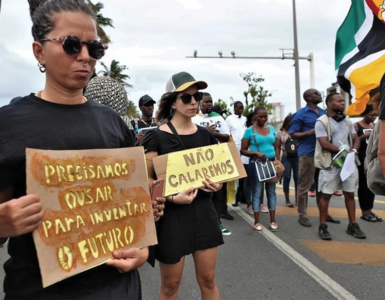MORTALITY-RATE: Study reveals staggering toll of being black in the United States: 1.6 million deaths over 22 Years…
By Liz Szabo
Research has long shown that Black people live sicker lives and die younger than white people. Now a new study, published Tuesday in JAMA, casts the nation’s racial inequities in stark relief, finding that the higher mortality rate among Black Americans resulted in 1.63 million excess deaths relative to white Americans over more than two decades.
Because so many Black people die young — with many years of life ahead of them — their higher mortality rate from 1999 to 2020 resulted in a cumulative loss of more than 80 million years of life compared with the white population, the study showed.
Although the nation made progress in closing the gap between white and Black mortality rates from 1999 to 2011, that advance stalled from 2011 to 2019. In 2020, the enormous number of deaths from covid-19 — which hit Black Americans particularly hard — erased two decades of progress.
Authors of the study describe it as a call to action to improve the health of Black Americans, whose early deaths are fuelled by higher rates of heart disease, cancer, and infant mortality.
“The study is hugely important for about 1.63 million reasons,” said Herman Taylor, an author of the study and director of the cardiovascular research institute at the Morehouse School of Medicine.
“Real lives are being lost. Real families are missing parents and grandparents,” Taylor said. “Babies and their mothers are dying. We have been screaming this message for decades.”
High mortality rates among Black people have less to do with genetics than with the country’s long history of discrimination, which has undermined educational, housing, and job opportunities for generations of Black people, said Clyde Yancy, an author of the study and chief of cardiology at Northwestern University’s Feinberg School of Medicine.
Black neighbourhoods that were redlined in the 1930s — designated too “high risk” for mortgages and other investments — remain poorer and sicker today, Yancy said. Formerly redlined ZIP codes also had higher rates of covid infection and death. “It’s very clear that we have an uneven distribution of health,” Yancy said. “We’re talking about the freedom to be healthy.”
A companion study estimates that racial and ethnic inequities cost the US at least $421 billion in 2018, based on medical expenses, lost productivity, and premature death.
In 2021, non-Hispanic white Americans had a life expectancy at birth of 76 years, while non-Hispanic Black Americans could expect to live only to 71. Much of that disparity is explained by the fact that non-Hispanic Black new-borns are 2½ times as likely to die before their 1st birthdays as non-Hispanic whites.
Non-Hispanic Black mothers are more than 3 times as likely as non-Hispanic white mothers to die from a pregnancy-related complication. (Hispanic people can be of any race or combination of races.)
Racial disparities in health are so entrenched that even education and wealth don’t fully erase them, said Tonia Branche, a neonatal-perinatal medicine fellow at Lurie Children’s Hospital of Chicago who was not involved in the JAMA study.
Black women with a college degree are more likely to die from pregnancy complications than white women without a high school diploma. Although researchers can’t fully explain this disparity, Branche said it’s possible that stress, including from systemic racism, takes a greater toll on the health of Black mothers than previously recognized.
Death creates ripples of grief throughout communities. Research has found that every death leaves an average of nine people in mourning.
Black people shoulder a great burden of grief, which can undermine their mental and physical health, said Khaliah Johnson, chief of pediatric palliative care at Children’s Healthcare of Atlanta. Given the high mortality rates throughout the life span, Black people are more likely than white people to be grieving the death of a close family member at any point in their lives.
“We as Black people all have some legacy of unjust, unwarranted loss and death that compounds with each new loss,” said Johnson, who was not involved with the new study. “It affects not only how we move through the world, but how we live in relationship with others and how we endure future losses.”
Johnson’s parents lost two sons — one who died a few days after birth and another who died as a toddler. In an essay published last year, Johnson recalled, “My parents asked themselves on numerous occasions, ‘Would the outcomes for our sons have been different, might they have received different care and lived, had they not been Black?’”
Johnson said she hopes the new study gives people greater understanding of all that’s lost when Black people die prematurely. “When we lose these lives young, when we lose that potential, that has an impact on all of society,” she said.
And in the Black community, “our pain is real and deep and profound, and it deserves attention and validation,” Johnson said. “It often feels like people just pass it over, telling you to stop complaining. But the expectation can’t be that we just endure these things and bounce back.”
Teleah Scott-Moore said she struggles with the death of her 16-year-old son, Timothy, an athlete who hoped to attend Boston College and study sports medicine. He died of sudden cardiac arrest in 2011, a rare condition that kills about 100 young athletes a year.
Research shows that an underlying heart condition that can lead to sudden cardiac death, hypertrophic cardiomyopathy, often goes unrecognized in Black patients.
Scott-Moore still wonders if she should have recognized warning signs. She also has blamed herself for failing to protect her two younger sons, who found Timothy’s body after he collapsed. At times, Scott-Moore said, she wanted to give up. Instead, she said, the family created a foundation to promote education and health screenings to prevent such deaths. She hears from families all over the world, and supporting them has helped heal her pain.
“My grief comes back in waves, it comes back when I least expect it,” said Scott-Moore, of Baltimore County, Maryland. “Life goes on, but it’s a pain that never goes away.” – KFF HEALTH NEWS Liz Szabo: lszabo@kff.org, @LizSzabo
Comment
JUNE 16 SHOULDN’T BE IN VAIN
Friday, June 16, is the day when Black people in particular, reflect on the brutal action of the apartheid police who ambushed and mowed down defenceless school children in Soweto who were protesting against the government’s introduction of Afrikaans as a medium of instruction in certain subjects.
It is estimated that 500 young people, mostly students, were shot and killed by the police. The first victim of this horrendous deed was 13-year-old Hector Pieterson. The shooting sparked protests and boycotts throughout the country and more victims were added to the list of the police deadly shootings.
Despite the apartheid government’s iron-fisted approach to force Afrikaans down their throats, Black students stood their ground and this led to school boycotts followed by stayaways and consumer boycotts by the Black masses who were now tired of a minority government that refused to listen to the voice of the majority.
Large numbers of student leaders fled the country following a massive crackdown by apartheid security forces who were detaining those who they believe were influential in organizing protest marches in their communities. A large number of children fled to neighbouring countries where most of them joined the military wing of the African National Congress, Umkhonto we Sizwe with the objective of taking up arms and come back to overthrow the apartheid regime.
Such was the bravery displayed by the youths.They fought for better education but above all, they fought for an end to apartheid; an end to police harassment, unlawful detentions and for a better life for Black people in South Africa. The government had to acknowledge that Blacks, who were in the majority, were part and parcel of this country and should be involved in decision- making processes of the country.
After the ushering of democracy in 1994, the youth were jubilant that their objectives for a better life and education would come to fruition. A black government was now in place. But alas. Instead most of those students who were killed by the apartheid police could be turning in their graves today because of the worsening plight of the youths in this country. Nearly thirty-seven percent of the youths are unemployed; most of the children cannot enroll for tertiary education because of the high fees and the cost of living has become unbearable.
This is a shame. Youths should be treated as the cream of the nation as they are future leaders. South Africa’s youths are suffering while there are reports that billions of rand earmarked for the betterment of people’s lives have been looted and most of the culprits are still roaming the streets and living in luxury.
The government is urged to look back at the gains made by the youths in 1976 and swiftly address their needs. Many of these youths put their lives on the line for the liberation of this country. Their efforts must not be in vain.






